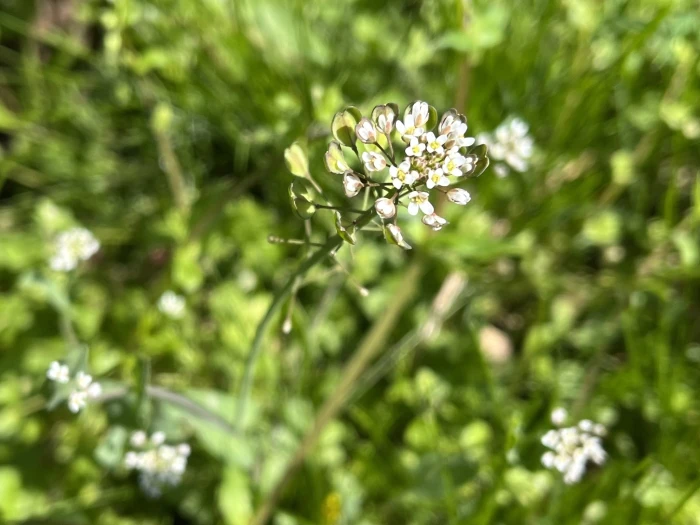Perfoliate Pennycress
(Noccaea perfoliata)
Perfoliate Pennycress (Noccaea perfoliata)
/
/

Pavel Kacl
CC BY 4.0
Image By:
Pavel Kacl
Recorded By:
Copyright:
CC BY 4.0
Copyright Notice:
Photo by: Pavel Kacl | License Type: CC BY 4.0 | License URL: http://creativecommons.org/licenses/by/4.0/ | Rights Holder: Pavel Kacl | Publisher: iNaturalist | Date Created: 2023-04-22T10:49:45Z |





















Estimated Native Range
Climate Requirements for Fairland, Maryland
| This Plant | Your Site | Plant Suitability for Your Location | ||
|---|---|---|---|---|
| • Precipitation | 2" - 86" | 45" | Aquatic | Aquatic |
| • High Temp. | 47°F - 105°F | 87°F | Your summer temperatures are normal for this plant. | Excellent |
| • Low Temp. | -24°F - 53°F | 24°F | Your winter temperatures are normal for this plant | Excellent |
This plant may not grow well at your location - your precipitation is too high.
Summary
Noccaea perfoliata, commonly known as Perfoliate Pennycress, is an annual herb that is native to a variety of habitats in Europe, Asia, and North Africa, including limestone-rich areas, rocky slopes, and open grasslands. It typically grows to a height of 0.2-0.5 feet (0.06-0.15 meters) and is characterized by its basal rosette of leaves and stems that are often purplish. The plant produces clusters of small, white flowers in the spring, which are not particularly showy but are attractive to certain pollinators. The foliage is distinctive, with leaves that appear to be pierced by the stem, giving rise to the name "perfoliate".
Perfoliate Pennycress is not commonly cultivated in gardens but can be grown as a curiosity or for educational purposes. It is valued for its unique leaf arrangement and can be used to fill small spaces in rock gardens or alpine collections. This plant prefers full sun exposure and thrives in well-drained soils, including clay, loam, or sandy types. It requires medium amounts of water and can tolerate drought once established. While not a major garden plant, it can be of interest to those who appreciate unusual botanical specimens.CC BY-SA 4.0
Perfoliate Pennycress is not commonly cultivated in gardens but can be grown as a curiosity or for educational purposes. It is valued for its unique leaf arrangement and can be used to fill small spaces in rock gardens or alpine collections. This plant prefers full sun exposure and thrives in well-drained soils, including clay, loam, or sandy types. It requires medium amounts of water and can tolerate drought once established. While not a major garden plant, it can be of interest to those who appreciate unusual botanical specimens.CC BY-SA 4.0
Plant Description
- Plant Type: Herb
- Height: 0.2-0.5 feet
- Width: 0.5-1 feet
- Growth Rate: Moderate
- Flower Color: White
- Flowering Season: Spring
- Leaf Retention:
Growth Requirements
- Sun: Full Sun
- Water: Medium
- Drainage: Medium, Fast
Common Uses
Low Maintenance, Rock Garden
Natural Habitat
Native to a variety of habitats in Europe, Asia, and North Africa, including limestone-rich areas, rocky slopes, and open grasslands
Other Names
Common Names: Pennywort Mustard, Thoroughwort Pennycress, Clasping-Leaved Pennycress, Shield Pennywort
Scientific Names: Noccaea perfoliata, Crucifera perfoliata, Ihsanalshehbazia granatensis, Kandis perfoliata, Kandis perfoliata subsp. perfoliata, Microthlaspi erraticum, Microthlaspi granatense, Microthlaspi perfoliatum, Microthlaspi perfoliatum subsp. perfoliatum
GBIF Accepted Name: Noccaea perfoliata